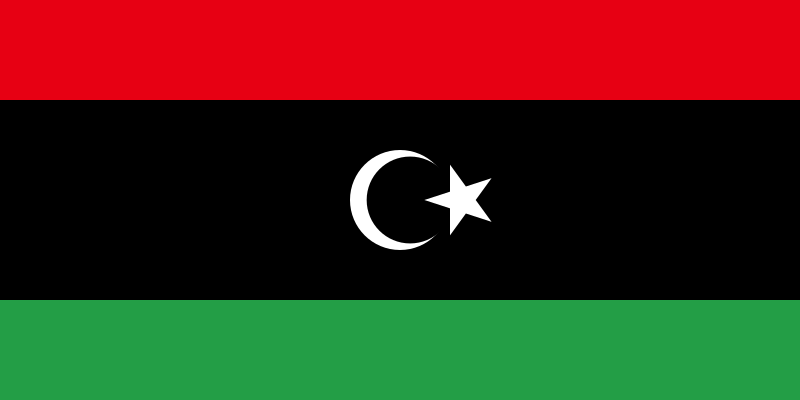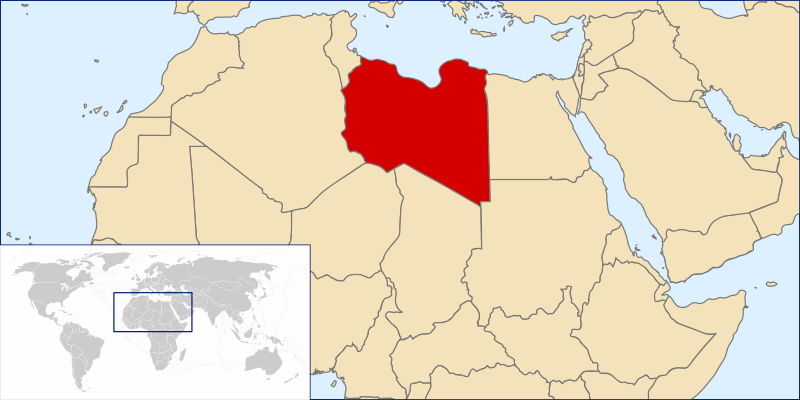 Libya (Arabic: ليبيا Lībiyā pronunciation; Libyan vernacular: Lībya pronunciation; Amazigh:
Libya (Arabic: ليبيا Lībiyā pronunciation; Libyan vernacular: Lībya pronunciation; Amazigh: ![]() ), officially the Great Socialist People’s Libyan Arab Jamahiriya ( Arabic: الجماهيرية العربية الليبية الشعبية الإشتراكية العظمى Al-Jamāhīriyyah al-ʿArabiyyah al-Lībiyyah aš-Šaʿbiyyah al-Ištirākiyyah al-ʿUẓmā pronunciation, also translated as Socialist People’s Libyan Arab Great Jamahiriya), is a country located in North Africa.
), officially the Great Socialist People’s Libyan Arab Jamahiriya ( Arabic: الجماهيرية العربية الليبية الشعبية الإشتراكية العظمى Al-Jamāhīriyyah al-ʿArabiyyah al-Lībiyyah aš-Šaʿbiyyah al-Ištirākiyyah al-ʿUẓmā pronunciation, also translated as Socialist People’s Libyan Arab Great Jamahiriya), is a country located in North Africa.
Bordering the Mediterranean Sea to the north, Libya lies between Egypt to the east, Sudan to the southeast, Chad and Niger to the south, and Algeria and Tunisia to the west.
With an area of almost 1,800,000 square kilometres (694,984 sq mi), Libya is the fourth largest country in Africa by area, and the 17th largest in the world.
The capital, Tripoli, is home to 1.7 million of Libya’s 5.7 million people. The three traditional parts of the country are Tripolitania, Fezzan, and Cyrenaica.
Libya has the highest HDI in Africa and the fourth highest GDP (PPP) per capita in Africa as of 2009, behind Seychelles, Equatorial Guinea and Gabon. These are largely due to its large petroleum reserves and low population.
The flag of Libya consists of a green field with no other characteristics. It is the only national flag in the world with just one color and no design, insignia, or other details.

Notes from Wikipedia








